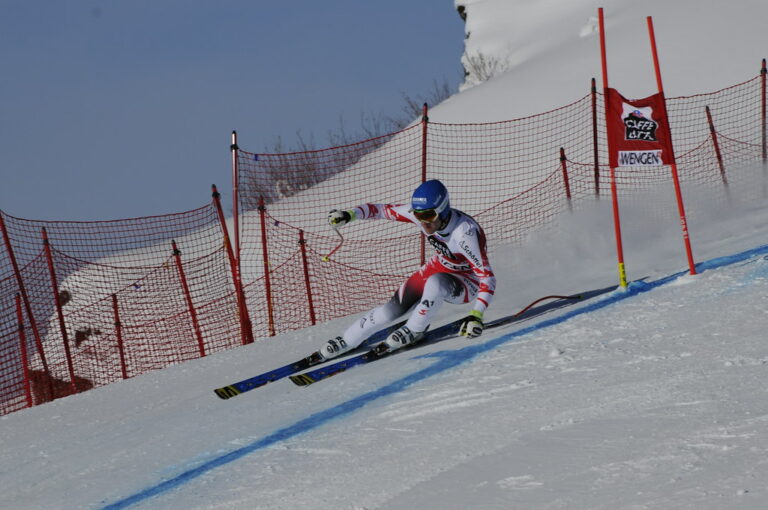General Rules of Snow Volleyball
You may not be aware that snow volleyball has its own set of rules that differ slightly from traditional volleyball. Did you know that the court dimensions, serving rules, and even the ball specifications are unique to this winter sport? Understanding these regulations is crucial for a successful game, whether you're a player or a spectator. So, let's uncover the specifics that make snow volleyball an exciting and challenging variation of the classic sport.
Court Dimensions
When setting up a snow volleyball court, it's crucial to adhere to the specific dimensions to ensure a fair and competitive game. The snow depth should ideally be around 8 to 12 inches to provide a suitable playing surface. The net distance in snow volleyball is the same as beach volleyball, with the net height for men set at 2.43 meters and for women at 2.24 meters. Properly setting up the net ensures that it is taut and at the correct height.
Line boundaries are essential in defining the court's limits. The court size for snow volleyball is smaller than indoor volleyball but larger than beach volleyball. Players must stay within these boundaries during play to keep the game fair. Understanding the court dimensions helps players position themselves strategically and move efficiently during the game. It's vital to be aware of the court's measurements to maximize your team's performance and enjoy a thrilling snow volleyball match.
Team Composition
Understanding the optimal team composition is fundamental for success in snow volleyball, as it significantly impacts your team's performance on the court. Player rotation is key in snow volleyball, as each team is made up of three players. This means that you need to work closely with your teammates to ensure that everyone has a chance to play different positions and that fatigue is evenly distributed. Team strategy is another crucial aspect of team composition. Whether you decide to have a more defensive or offensive approach, it is essential that all team members are on the same page. Communication and coordination are vital to execute your strategy effectively.
When it comes to team composition, each player brings a unique set of skills and strengths to the game. Understanding how to maximize these attributes within your team dynamic can lead to a successful outcome on the snow volleyball court. Remember, adaptability and teamwork are essential elements in achieving victory in this exciting sport.
Scoring System
To grasp the essence of snow volleyball games, familiarize yourself with the scoring system that governs the sport. In snow volleyball, points are allocated to teams based on rally scoring. This means that a point is scored on every serve, regardless of which team served. Matches are typically played as best of three sets. The first two sets are played to 21 points, with a minimum two-point advantage to win the set. If a third set is needed, it is played to 15 points.
Scoring terminology in snow volleyball includes terms like "side out," which refers to a team winning the serve after the opponent has scored a point. Tiebreaker rules come into play when each team has won a set, and a deciding set is needed. In the case of a tie at 20-20 in the first two sets, teams continue playing until one team gains a two-point advantage.
Understanding the scoring system and match format in snow volleyball is crucial to strategizing and enjoying the game to the fullest.
Player Positions
Having a good grasp of the scoring system in snow volleyball is essential as it sets the foundation for understanding the player positions on the court. When it comes to player positions, each individual has a specific role that contributes to the team's overall performance. Let's explore the various player positions and their key responsibilities:
| Position | Responsibilities |
|---|---|
| Setter | Setting skills, coordinating offensive plays |
| Blocker | Block techniques, disrupting opponent's attacks |
| Defender | Defensive strategies, covering the court efficiently |
| Attacker | Offensive tactics, scoring points efficiently |
In snow volleyball, the setter plays a crucial role in setting up the team's offensive plays, while the blocker focuses on effective block techniques to counter the opponent's attacks. Defenders are responsible for implementing solid defensive strategies and covering the court effectively. Lastly, attackers need to master offensive tactics to score points efficiently and contribute to the team's success. By understanding each player's position and responsibilities, teams can work together seamlessly to achieve victory on the snowy court.
Serving Rules
When serving in snow volleyball, your technique and accuracy are crucial for a successful start to the point. Here are some key points to keep in mind:
- Master Your Serving Techniques: Whether you prefer the traditional float serve or the more aggressive topspin serve, honing your serving techniques is essential. Practice precision and consistency to keep your opponents on their toes.
- Strategize Your Serves: Consider your serving strategy carefully. Are you aiming to put pressure on a specific player, or do you want to target a weak spot on the court? Mix up your serves to keep the other team guessing and gain the upper hand.
- Harness Your Serving Power: While accuracy is vital, don't forget the importance of serving power. A well-placed, powerful serve can disrupt the opponents' rhythm and give your team an immediate advantage.
Rotation Regulations
Now, let's talk about the crucial points regarding player positioning and serving order in snow volleyball. Understanding these rotation regulations is essential for maintaining fairness and strategy during the game. The points cover specific rules that players must adhere to, ensuring a balanced and competitive playing environment.
Player Positioning Rules
Understanding the player positioning rules and rotation regulations is crucial for maintaining fairness and strategic gameplay in snow volleyball. When it comes to player positioning, here are three key points to consider:
- Fluid Movement: Embrace the freedom to move around the court strategically, adapting to the flow of the game without restrictions.
- Strategic Switches: Utilize rotations to your advantage, switching positions to optimize defensive strategies and communication techniques.
- Dynamic Teamwork: Foster a cohesive team dynamic by rotating effectively, blending blocking techniques with offensive plays seamlessly.
Serving Order Guidelines
To ensure fair play and strategic execution in snow volleyball, adherence to serving order guidelines is essential in maintaining a balanced rotation among team members. In snow volleyball, serving follows a specific order to ensure fairness and equal opportunities for all players. Here is a breakdown of the serving order guidelines:
| Player | Position |
|---|---|
| Player 1 | Right Back |
| Player 2 | Middle Back |
| Player 3 | Left Back |
| Player 4 | Front |
Players must be in the correct position to avoid foot faults and must communicate effectively using hand signals to indicate the type of serve. By following these guidelines, teams can maintain a smooth rotation and enhance their gameplay.
Net Height
When it comes to Snow Volleyball, getting the net height just right is essential for fair play. The optimal net height and regulation measurements are key points to consider. Understanding these points will ensure that your game is played according to the official rules and standards.
Optimal Net Height
For optimal gameplay and fair competition, the net height for snow volleyball is set at a standard of 2.43 meters for both men's and women's matches. This height ensures a balance between offensive and defensive strategies, allowing players to showcase their skills effectively. To fully appreciate the significance of the net height in snow volleyball, consider the following:
- Net Stability: The net's height impacts its stability, influencing how it reacts to powerful spikes and delicate touches.
- Volleyball Techniques: A standardized net height encourages players to refine their techniques, promoting a more engaging and skillful gameplay experience.
- Fair Competition: By adhering to the 2.43-meter height for both genders, a level playing field is established, fostering fair competition and exciting matches.
Regulation Net Measurements
With the net height set at 2.43 meters for snow volleyball matches, understanding the regulation net measurements is crucial for players and officials to ensure fair play and competitive integrity. Net stability is key in maintaining the correct height throughout the game. The net should be taut to prevent it from sagging during play, which could affect the fairness of the game. Proper net tension is necessary to ensure that the ball bounces off consistently during rallies and doesn't get caught or hindered by a loose net. Players and officials should regularly check the net tension and make adjustments as needed to uphold the standards of snow volleyball matches. By adhering to the regulation net measurements, you contribute to the smooth running and fairness of the game.
Ball Specifications
To ensure fair play and consistency, snow volleyball balls must adhere to specific size and weight requirements. When it comes to the ball specifications in snow volleyball, here are some key points for you to keep in mind:
- Ball Weight, Size: Snow volleyball balls are slightly larger and heavier than indoor volleyball balls. They typically weigh between 260-280 grams and have a circumference of 65-67 centimeters. This weight and size allow for better control and visibility in snowy conditions.
- Ball Material, Texture: Snow volleyball balls are designed to withstand cold temperatures and wet conditions. They are usually made of synthetic leather or a similar durable material that provides good grip even when wet. The texture of the ball is essential for players to have a secure hold and accurate ball handling during matches.
- Consistency is Key: Ensuring that all snow volleyball balls used in a tournament meet the same specifications is crucial for maintaining fairness and uniformity throughout the games. Make sure to check the weight, size, material, and texture of the ball before stepping onto the snowy court for a thrilling match.
Game Duration
Moving on from understanding the specifications of snow volleyball balls, let's now explore the designated game duration for snow volleyball matches. In snow volleyball, game duration is usually determined by time limits set for each match. Typically, a snow volleyball game consists of three sets, with each set played to a specified point limit, often 15 or 21 points. The team that wins two sets first is declared the winner of the match.
In the case of a tie where each team has won one set, an overtime set might be played to determine the overall winner. Overtime rules can vary but usually involve playing to a lower point limit, such as 10 points, to decide the victor.
Weather conditions can play a significant role in game duration. In instances of heavy snowfall or other extreme weather conditions, matches may be delayed or even postponed for the safety of the players. It's essential for organizers to consider these factors to ensure fair and safe gameplay.
Frequently Asked Questions
Can Players Wear Regular Volleyball Shoes or Are Special Shoes Required for Snow Volleyball?
You can wear regular volleyball shoes for snow volleyball, but special shoes are recommended for better performance. Specialized footwear designed for snow sports can provide improved traction, keeping you comfortable and enhancing your game on the snowy court.
Are There Any Specific Strategies or Techniques That Are Unique to Playing Snow Volleyball Compared to Indoor or Beach Volleyball?
When playing snow volleyball, unique strategies like adjusting for the slippery surface and using dynamic movements are key. Techniques such as softer touches on the ball and quick reactions help you navigate the snow volleyball court effectively.
How Does the Cold Weather and Snow Conditions Affect Gameplay and Player Performance in Snow Volleyball?
Snow conditions in snow volleyball can make gameplay a chilly challenge. Cold weather affects player performance by slowing movements and impacting ball control. Adaptation and resilience are key to conquering these wintry obstacles.
Are There Any Specific Safety Precautions or Gear Recommendations for Playing Snow Volleyball?
To enjoy snow volleyball safely, wear proper gear like thermal layers, goggles for sun and wind protection, and sturdy shoes for traction. Always warm up to prevent injuries. Embrace the chill and have fun playing!
Are There Any International Tournaments or Competitions Specifically Dedicated to Snow Volleyball That Players Can Participate In?
Seeking snow volleyball leagues or international snow volleyball tournaments to showcase your skills and passion? Look no further! Numerous competitions worldwide offer thrilling opportunities for players to engage in this unique sport.






